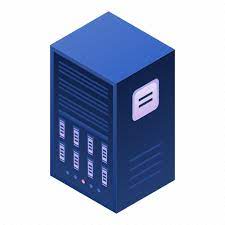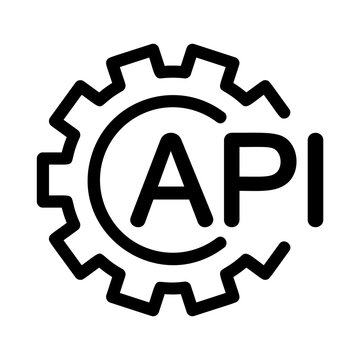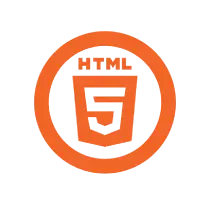Best Web Design And Web Development Company
Website development, offered by the Best Web Design and Web Development Company in Hosur, involves the comprehensive process of creating and maintaining websites and web applications. This includes everything from crafting visually appealing designs, provided by a top-tier web design company, to developing robust client-side and server-side scripts, ensuring your site is secure and functional.
Connect With US View Our WorksTransform your business with high-quality Website Developement solutions

A website is a collection of interconnected web pages, typically identified by a common domain name, that are hosted on a web server and accessible over the internet. Websites can contain a wide range of content, including text, images, videos, and other multimedia elements, and are designed to serve various purposes, such as providing information, offering services, or facilitating online transactions. Whether it's website and app development, content creation, or network security configuration, our team ensures that your digital presence is both powerful and reliable, catering to your specific business needs.
Website development is a multi-stage technical process that involves the creation, deployment, and maintenance of websites. Friendzion feels privileged to state that we have proven results in satisfying our customer's requirements/demands. Handling client issues effectively is crucial for maintaining strong relationships and ensuring the success of any website development project. At Friendzion Technologies, we prioritize clear communication, problem-solving, and client satisfaction. Each stage in this process plays a crucial role in ensuring a websites functionality, security, and user experience.
Exploring The Diverse Landscape Of Web Design company
Static Website Development
Static websites feature fixed content that remains unchanged unless manually updated by a developer. They are built using HTML, CSS, and occasionally JavaScript for basic interactivity. These websites are ideal for small businesses, personal portfolios, and informational sites where the content seldom changes. They are simple, quick to develop, and cost-effective.
Dynamic Website Development
Dynamic websites generate content on the fly, typically using server-side scripting languages like PHP, ASP.NET, or Node.js, along with a database to store information. The content displayed can change based on user interactions or other factors. These websites are suitable for blogs, news sites, e-commerce platforms, and social media sites.
E-Commerce Website Development
E-Commerce websites are designed to facilitate the online sale of products and services. They typically include features such as product listings, shopping carts, payment gateways, and order management systems. These sites are used by online retail stores, marketplaces, and service providers that offer online payment options.
CMS-Based Website Development
CMS-based websites utilize content management systems like WordPress, Joomla, or Drupal, enabling users to easily create, manage, and modify content without requiring extensive technical knowledge. These websites are commonly used for blogs, corporate sites, news platforms, and educational websites. They offer user-friendly interfaces, flexibility, and the ability to extend functionality through plugins and themes.
Single-Page Application (SPA) Development
Single Page Applications (SPAs) load a single HTML page and dynamically update content as the user interacts with the app, offering a smoother and faster user experience. Technologies like Angular, React, or Vue.js are commonly used to build SPAs. They are ideal for modern web applications, dashboards, and interactive web apps, providing faster loading times, smoother navigation, and an enhanced user experience.
Progressive Web Application (PWA) Development
Progressive Web Apps (PWAs) combine the advantages of web and mobile apps, delivering a web-based experience that feels like a native app. They can function offline, send push notifications, and be installed on mobile devices. PWAs are well-suited for news platforms, e-commerce sites, and service-based websites seeking mobile-friendly solutions.
Responsive Website Development
Responsive websites automatically adjust their layout and content to fit the screen size and resolution of the device being used, ensuring a consistent user experience across desktops, tablets, and smartphones. They are ideal for any website targeting a broad audience, especially those with significant mobile traffic. Responsive design enhances user experience, improves SEO, and allows for a single codebase that works across all devices.
Enterprise Website Development
Enterprise websites are large-scale, complex platforms designed to meet the needs of large organizations. They often integrate with enterprise systems such as ERP, CRM, and databases. These websites are used by corporations, government agencies, and large institutions that require robust, scalable, and secure web solutions. They offer high scalability, strong security, and seamless integration with enterprise tools.
Web Portal Development
Web portals are designed to aggregate and present information from various sources in a unified manner. They often offer a personalized experience based on users' roles or preferences. Common examples include university portals, employee portals, government portals, and client portals. These platforms provide centralized access to information and services, user-specific content, and secure access management.
Friendzion Technologies
Collaborate with Our website and app development Software Company
For EnquiryA Complete Roadmap For Website Creation
Planning
Structure and Layout Planning Deciding on the website s architecture, layout, and navigation is crucial to ensure a logical flow and a user-friendly interface. This process involves determining how different sections of the website will be organized and how users will navigate through the site.
Content Strategy involves planning the placement and type of content, including text, images, videos, and other media, to effectively convey the website s message and engage users. A well-thought-out content strategy ensures that the website delivers a clear and compelling message to its audience.For a web design company that excels in both website and app development, its essential to consider these elements carefully. As the Best Web Design and Web Development Company in Hosur, focusing on effective structure and content planning is key to creating successful and engaging digital solutions.
Design
Mockups and User Interfaces Creating visual representations of the websites design through mockups and wireframes helps guide development and provides a preview for client feedback. This process allows stakeholders to visualize the websites layout and design before development begins, ensuring that the final product aligns with their expectations.
Content Placement and Strategy Planning the placement and type of content, including text, images, videos, and other media, is essential to effectively convey the websites message and engage users. A well-defined content strategy ensures that all elements are organized in a way that enhances user experience and supports the websites goals.
Coding
Front End Development Writing the code that determines how the website looks and interacts with users involves using HTML, CSS, and JavaScript. This includes ensuring responsiveness so the site functions well on all devices, providing a seamless user experience across desktops, tablets, and smartphones. Back-End Development Implementing server-side programming is crucial for managing databases, server configurations, and application logic. This is achieved using languages such as PHP, Python, or Node.js, enabling dynamic content and complex functionality.
Integration of Advanced Features Adding advanced functionalities, such as e-commerce platforms, content management systems (CMS), social media integration, and interactive forms, is key to enhancing the user experience. These features provide added value and versatility, making the website more functional and engaging.
Programming
Database Management Designing and managing the database schema is crucial for storing and retrieving information efficiently. This includes creating and maintaining databases that support the website's data needs, ensuring data integrity, and optimizing performance for faster access.API Integration Integrating third-party APIs (Application Programming Interfaces) can extend the website's functionality by connecting it with external services and data sources. This might include payment gateways, social media platforms, and other tools that enhance the site's capabilities.
Ensuring that the back-end system is scalable and optimized for performance is vital for handling increased traffic and complex operations. This involves optimizing code, configuring servers, and employing best practices to maintain high performance as the website grows.For a web design company that excels in both website and app development, robust programming is crucial.
Testing
Comprehensive Testing Conducting thorough testing is essential to ensure the website functions correctly across various devices, browsers, and operating systems. This includes Usability Testing Evaluating the website's user interface and user experience to ensure it is intuitive and easy to navigate. This involves testing the site with real users to identify any usability issues and gather feedback for improvements.
Load Testing Assessing the website's performance under different levels of traffic to ensure it can handle high volumes of users without slowing down or crashing. Load testing helps identify potential bottlenecks and ensures the site remains responsive during peak times.Security Testing Identifying and addressing vulnerabilities to protect the website from potential threats. This includes testing for common security issues such as cross-site scripting (XSS), SQL injection, and other vulnerabilities that could compromise data or functionality.
Deployment
Deployment to Live Server Launching the website involves deploying it to a live server, making it accessible to users worldwide. Domain and Hosting Setup Configuring the domain name and web hosting services is crucial for making the website accessible on the internet.Post-Launch Monitoring After deployment, it is essential to monitor the website's performance and functionality closely. Backup and Recovery Plans Establishing regular backup routines and recovery plans is important to safeguard against data loss or server issues.
Performance Optimization Continuing to optimize the website's performance post-launch involves monitoring site speed, load times, and user interactions. This helps identify areas for improvement and ensures that the website remains fast and responsive as user traffic grows.For a web design company specializing in both website and app development, a smooth deployment process is crucial. As the Best Web Design and Web Development Company in Hosur, effective deployment and post-launch management ensure that the website is live, functional, and continuously optimized for the best user experience.
Maintenance
Performance Monitoring Using analytics tools to track site performance is crucial for optimizing user experience. This includes monitoring traffic, user behavior, and site speed to make necessary adjustments that enhance performance and responsiveness.Regular Updates Continuously updating the site is essential to fix bugs, improve performance, and add new features as technology and business needs evolve. Regular updates ensure that the website remains compatible with new technologies and trends while addressing any issues that may arise.
Backup Management Regularly backing up the website and its database ensures that data can be quickly restored in case of an issue or failure. This involves scheduling automatic backups and periodically testing recovery procedures to ensure data integrity and availability.User Feedback and Support Actively collecting and addressing user feedback helps improve the website and resolve any issues users may encounter. Providing support and troubleshooting assistance ensures a positive experience for all visitors.


















